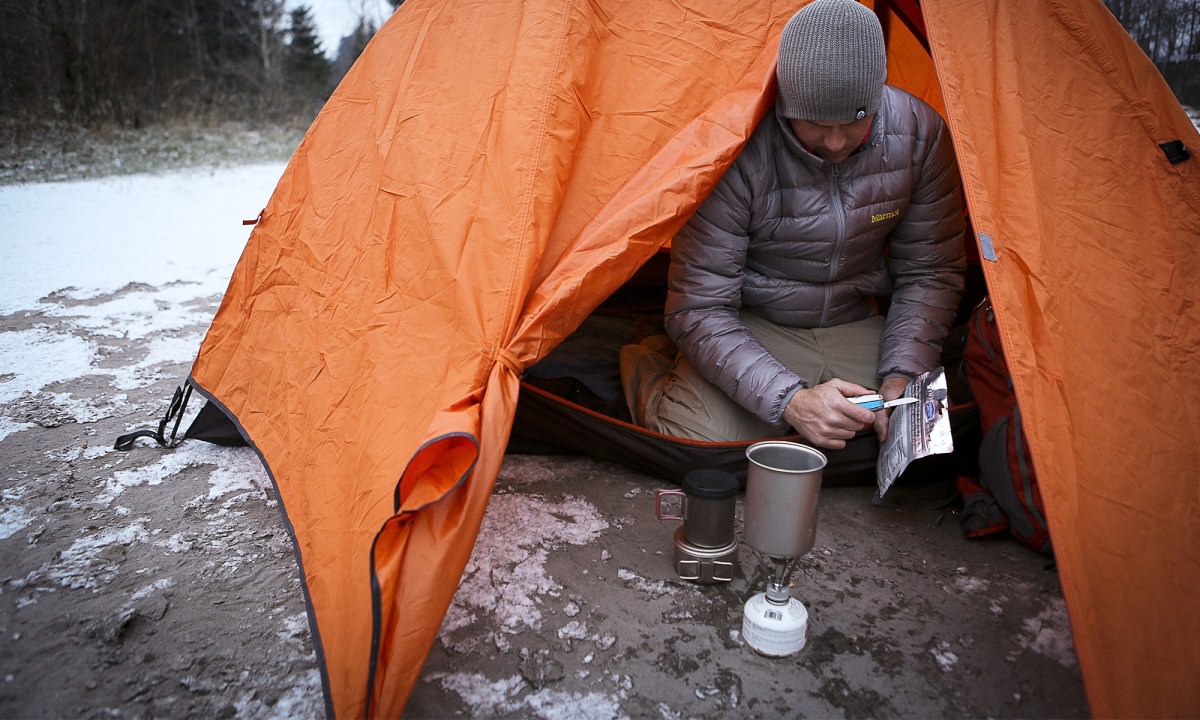Camping during shoulder season can be sweet: fewer crowds, fewer bugs, and fall colors or spring blooms in full effect.
But it can also be iffy, as you never know what the weather is going to do. Here are some tricks to enjoying the less crowded times of year affectionately known as “shoulder season."
Spring Up, Fall Down
Follow the snow line. In spring when the snow line is deep in the trees and gradually rises, follow it. Camp below and find trails that are just below treeline, and have your navigation skills tuned for when the trail disappears below the snow line—be ready to use your route finding, map and compass, or GPS. In the fall, start your shoulder-season as high as the weather allows, and drop down as the conditions demand. Let winter chase you out of the mountains, one camping weekend after another.
Snow Tools
Don’t be surprised by late or early snow. Keep a shovel in your rig. For hikes that involve mountain passes, consider bringing along an ice ax or instep crampons, especially in spring. If you know your route will cross a snowy slope, do it early in the morning before the snow gets soft and warm and is more prone to slips and rockfall. In the fall, when things are prone to freeze during the cold evenings, you may want the opposite—wait for sun to warm the slope a bit so it’s not so icy.
And of course always keep a multi-tool handy. From help around the campfire to fixing broken gear, you never know when you’ll need it.
Forecast is Forewarned
Pay attention to the weather forecast—if an unseasonal shift is coming in, have a Plan B for your camping weekend and adjust accordingly. Don’t be macho about “toughing it out." At best, you won’t have any fun. At worst, it could get bad.
Always Look on the Sunny Side
Pick camps that have southern exposure and catch a lot of direct sun. These are the spots you might avoid in the heat of summer, but in spring and fall, when evenings and mornings are cold, these camps are far more pleasant.
App tools designed for photographers, like The Photographer’s Iphemeris, allow you to look at a site and see when and how the sun will hit it. Look for southern-facing spots 2/3 of the way up ridges: at the top of the ridge it’s usually too windy, and at the bottom of the valley the warm air rises away from you. You may have to choose between morning and afternoon sun. Your agenda will determine which is more important: usually it goes with which time block you tend to be lollygagging in camp: for me that’s afternoon. Since I’m usually up and out fairly quickly in the morning, I can put up with cold morning if I can be warm after the day’s hike, climb, or paddle.
Temperature Tricks
Use some tricks to stay warm at night. Go for a walk before bed to get your internal temperature up. Do pushups in your sleeping bag so it traps the heat you put out. Bring a warm rock into your tent (on a thick piece of bark so it doesn’t melt the tent floor). Snuggle up in a double sleeping bag. Stay hydrated. And of course, bring a thermos of hot tea or cocoa on your hike.
Enjoy It!
Most importantly, have fun! Shoulder season camping is glorious because you get these places all to yourself in a rarified, crisp landscape that shows you a new view and vibe on your favorite outdoor spots.
